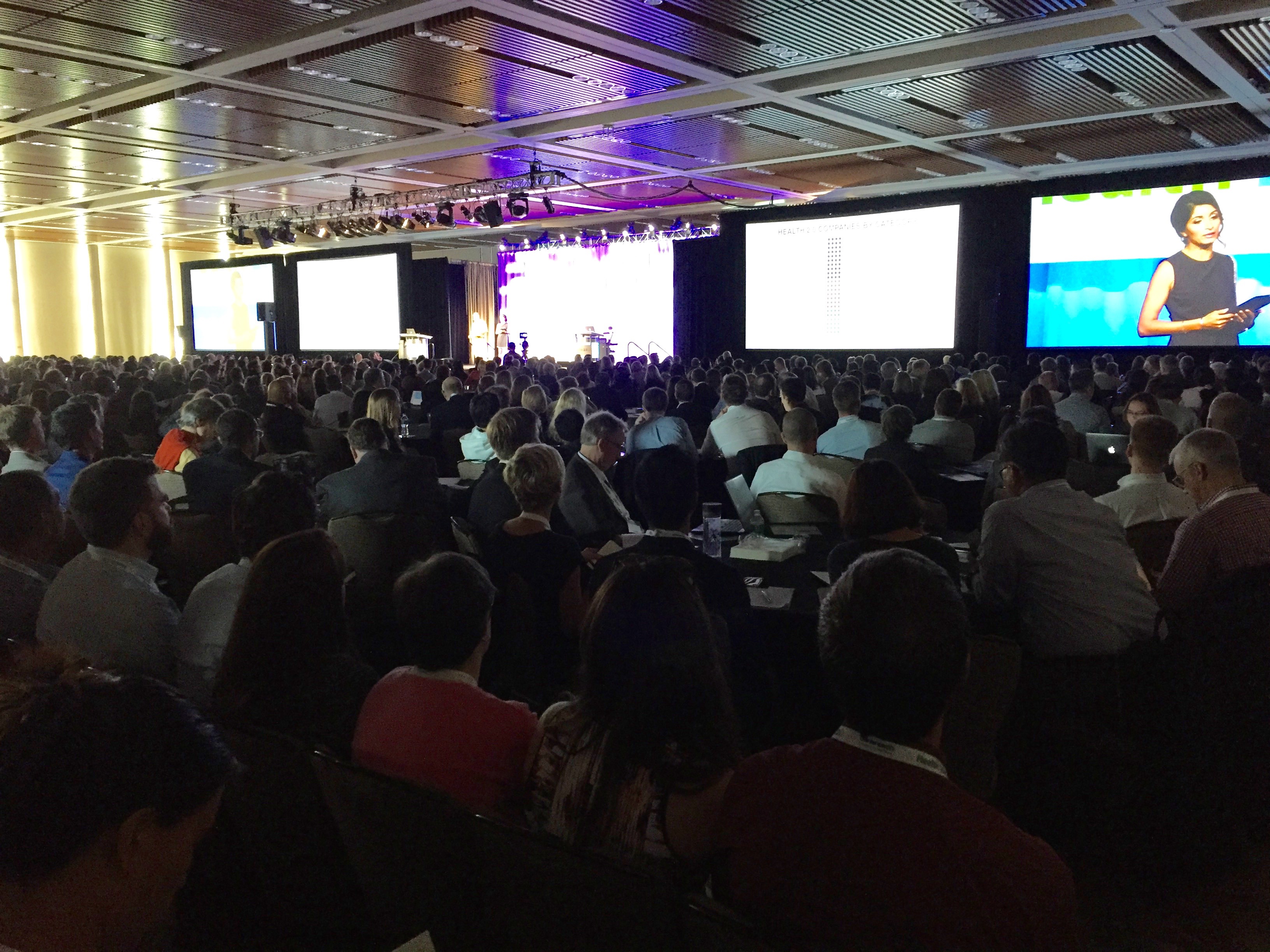
But what we are happy to see is that the event has tempered this hype with a certain amount of reflection and pragmatism. This partly reflects an industry that has grown tired of hype and wants to see results.
So what are some key take-aways for Brian Eastwood and myself…
- The loci of interest has shifted from almost exclusively the consumer, to consumer-provider interaction and collaboration. There is a tsunami of solutions entering the market that attempt to combine education, collaboration and action to drive patient/physician (or consumer/clinician) activation – all circling back to care management. This is leading to a blurring of the lines between traditional domains of care management, patient engagement and clinician alignment. I was particularly impressed by the demos of CareSync, Conversa and RoundingWell.
- In past, majority of start-ups demoing their wares at Health 2.0 were targeting the consumer market, only to find no ready market. Now they are targeting providers, which at first glance appears quite lucrative. Not so fast you healthcare entrepreneur. They are running into a significant barrier here as well – extremely long sales cycles. Even if a start-up offers their product for free as part of a pilot, proof-of-concept initiative, it can take up to a year to get it through “the approval process.”
- Healthcare organizations want to bring new innovations into their organizations and are beginning to realize that they are a part of the adoption problem. Several providers are now looking to band together and develop common best practices that will facilitate adoption of new innovations going forward, e.g. tackling the IRB approval process.
- Low-acuity care is the low-hanging fruit. Much of the consumer-facing technology on display addressed the inefficiencies of receiving care for minor aches and pains, from the care itself to the administrative burden it places on patient as well as providers. While this is poised to further exacerbate what the American Medical Association sees as the degradation of the provider-patient relationship, it’s also poised to provide convenient care options for patients who don’t have a relationship with a provider at all.
- Allscripts, one of the vendors rated in our recent EHR PaaS report, was there promoting their Developer Partners program. They have done a good job here – honestly leading virtually all other EHR vendors and now have some 132 third party vendors in this program. Their API, Unify, is built with JSON and they currently have some 500 service call profiles for across various Allscripts products (EHRs, PMS, etc.).
- Messaging still rules. For every one next-generation wearable device in the expo hall (with growing use cases for monitoring chronic conditions, it’s worth noting), there were several apps centered on messaging. This year’s Health 2.0 gave us tools for asking questions of a real doctor and not Dr. Google (Curely), coordinating caregivers (see first point), and communicating with a wellness coach (too many to count). In addition, the most effective interventions in the Clinton Foundation’s pilot programs to bring healthcare services to rural and urban underserved communities involved SMS messaging. And that’s in part because…
…the digital divide still persists. Yes, smartphone and Wi-Fi adoption continues to climb, but the digital health industry cannot assume that every healthcare technology consumer – or physician, for that matter – has an iPhone 6, an iPad Retina, and a MacBook Air (all of which were easy to find at Health 2.0). Putting digital health in the hands of those who need it most – the chronically ill, the poor, the uninsured, the elderly, or a combination therein – means building solutions that they can use right now.
The event remains an outlier in the world of Health IT. There is little if any representation of other major HIT vendors (Allscripts and athenahealth were the exceptions). This is not necessarily a bad thing, but it does lead to an audience that is self-selecting and not very representative of the HIT sector in totality and most importantly, few if any of those that ultimately make key purchasing decisions for their organizations were in attendance.
While I never thought this event would make it past 5 years before drifting off into the sunset, here we are approaching a decade and this event continues to draw a big crowd with some 1,900 in attendance. Clearly there remains strong interest in this field and the Health 2.0 organizers are just about the only game in town for most start-ups to gain some modicum of visibility in a very noisy market.




0 Comments
Trackbacks/Pingbacks